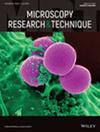Mosquito-borne viruses continue to affect billions of people globally, posing a severe health risk and an economic burden. Aedes albopictus (Skuse), a highly invasive mosquito species, has repeatedly invaded and increased its presence, serving as a key vector of dengue virus, yellow fever virus (YFV), Zika virus (ZIKV), and Chikungunya virus (CHIKV), causing frequent outbreaks of related viral diseases. This study investigated the impact of larval diet quantity on larval duration and adult body size. The effect of adult mosquito body size on various aspects of Ae. albopictus was also examined, including blood-feeding behavior, follicular development, reproductive capacity, egg retention capacity, preoviposition period, and fecundity. These diverse characteristics all have an effect on arboviruses transmission. The changes in body size (small, medium, and large) are obtained by providing different quantities of larval diet (low, average, and high). The results indicate that the quantity of larval diet directly impacts the adult body size while inversely affecting the larval duration. Furthermore, a positive correlation exists between adult body size and wing length, implying that wing length could be a reliable indicator of adult body size and rearing conditions during the developmental stages. Large females exhibited higher numbers of follicles and greater fecundity. Moreover, a significant correlation was observed between follicle number before the first blood meal and total egg number. In contrast, increasing wing length decreased the number of blood meals, egg retention, and the preoviposition period. The tendency of small females to perform multiple feedings was greater than that of large females. Small females exhibited a higher propensity for multiple feeding activities when compared to their larger counterparts. Most medium-sized females (92.8%) deposited eggs in their ovaries, however, 7.2% retained a few. In contrast, most large females (87.4%) had complete ovary egg-laying, whereas a minority (12.6%) retained some of their eggs. About 35.2% of small females showed ovarian egg retention, while 64.8% successfully laid all their eggs. After the first blood meal, the oviposition rate was 92% for large females, 88% for medium females, and 76% for small females. About 69.86% of the follicles in large females underwent vitellogenesis. This finding suggests that small females with low energy reserves exhibited incomplete oviposition and multiple blood feedings to increase their reproductive capacity.


